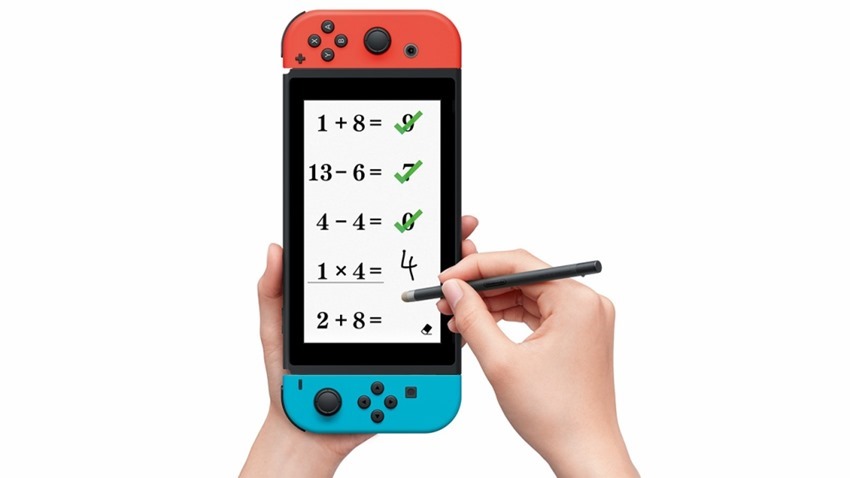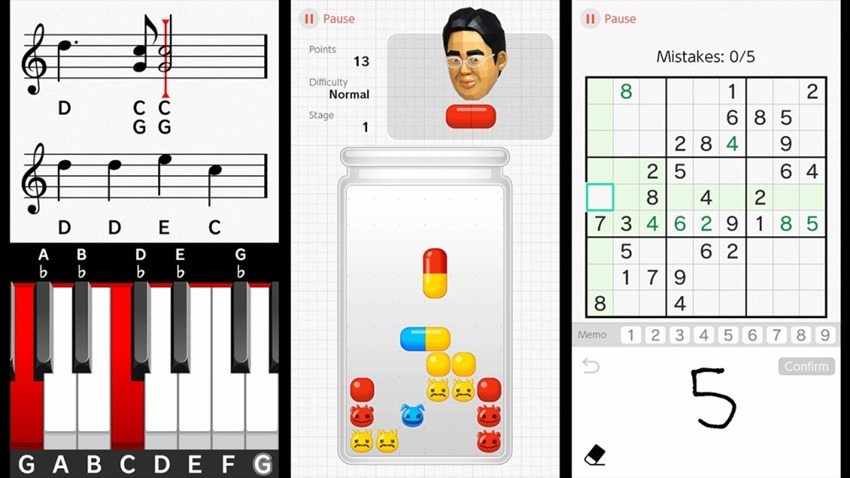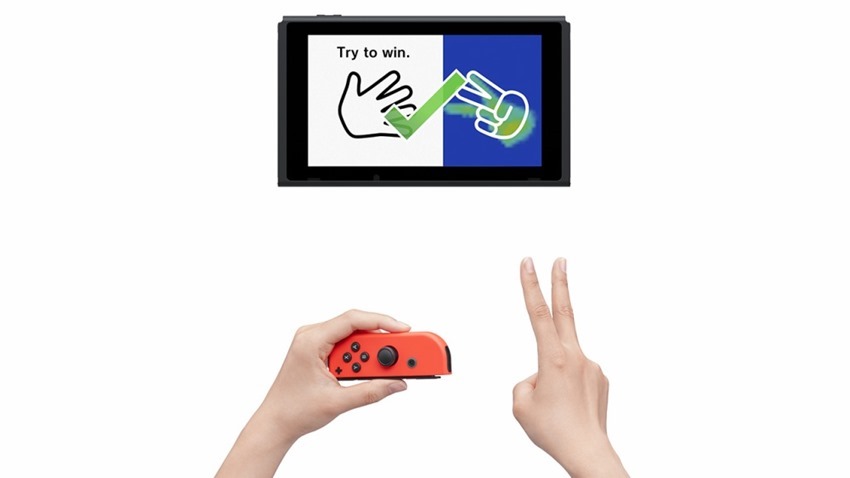Like war, it never changes. There’s a moment early in every single one of Nintendo’s Brain Training game that’ll trample all over your soul. Once you’ve booted up the game and tried its initial challenging after creating a profile, Brain Training will give you an age rating based on your performance. Because it’s been months or even years since you’ve done quick-fire mental maths, the game will inevitably tell you you have the mental faculties of an unpeeled carrot. By making the game part of your daily ritual, you can bring the rating that suggests you’re a septuagenarian closer to something in line with your real age.

Insanity, Far Cry 3’s infamous Vaas eloquently reminds us, (paraphrased, of course) is doing the exact… same thing…over and over again expecting… it to change. I fired up Brain Training on the Switch, did the introductory stuff, and well, yes, according to the game – and Dr Kawashima’s bulbous head – I’m 73.
Since then, I’ve been doing my daily training, playing a few of the included brain games and measuring my brain age, and have thankfully brought that number back down to something closer to my real age. When it was originally released for the Nintendo DS in 2006, Dr Kawashima’s Brain Training became a phenomenon, as one of the mist mainstream bits of software available on Nintendo platforms. Years later, and it’s hardly changed very much.

2013’s Devilish Brain Training tried to get us to focus and multitask better with its bastardly games, but here on the Switch, it’s been turned down several notches, giving us an experience that’s not very far removed from the original game, other than the platform it’s on. You’ll still have to use a stylus (included with the physical copy of the game) or a finger to quickly jot down the answers to sums or draw lines or tap on the screen. Given how much of a reliance it has on the touch screen, it makes sense that it only works in handheld mode.
It’s still the same collection of short mental exercises whose purpose it to sharpen up your frontal lobe and, if not actually make you smarter, at the very least feel like you’re becoming marginally smarter as you become better able to do quick maths, remember patterns and multitask. As always, they’re simple tasks that are challenging without being needlessly frustrating. I enjoy quick sums, I like the multitasking ones where you have to tap the largest number on the bottom half of the screen while tapping the runner at the top to make sure he clears a hurdle and other games of that ilk. I don’t even mind the ones that have you memorise patterns of dozens of random words. Less engaging are the ones that have you reading paragraphs out loud or having to count loud to 120. It’s all padded out by a few relaxing games that engage your brain, but without making you want to smash things. Yes, of course, the list still includes Sudoku.

One of the only genuinely new things is a series of games that use the otherwise criminally under-used sensors on the right Joy-Con. By using the light sensor held in your off hands, the game is eerily and accurately able to qualify shapes made with your dominant hand. It picks up rock, paper and scissors gestures, asking you to quickly lose the game, or picks up the number of fingers you’re holding up as you try to do quick calculations on your hands. Because the Switch doesn’t include a built-in microphone, the dastardly games that had you calling out words by their colour rather than their text and other similar games are missing, and this is as decent a replacement as is possible. Unfortunately, it means that Switch Lite owners are left out, and there’s nothing on the packaging that suggests a lesser experience for those with the newer, smaller Switch.
Unique to this version or are a few two-player games. Nestled within the Quick play, a handful of exercise allow for head-to-head competitive brain exercises, where you’ll use a single a single Joy-Con instead of the touch screen to input your answers. Once again, most Switch Lite owners will be left out. There are also, it must be said, a few instances where my admittedly awful handwriting wasn’t picked up properly, leading to a lower brain age rating. It’s particularly noticeable on the number 5, to the point where there’s an option in the menus to change how it deals with the number. Neither option worked especially well for me.
Last Updated: January 28, 2020
| Dr Kawashima’s Brain Training for Nintendo Switch | |
|
As similar as it is to other iterations, I’m happy to have the good doctor back. It’s the sort of hyper-casual gaming that I can afford 5 minutes of every day to. I can’t pretend it’s made me any smarter or even feel any smarter beyond becoming slightly more proficient in its specific exercises. It could do with a little more variety, but it’s a welcome diversion and a reminder of simpler times.
|
|
|---|---|
| Dr Kawashima’s Brain Training for Nintendo Switch was reviewed on Nintendo Switch | |
|
64 /
100
| |






















Hammersteyn
January 27, 2020 at 15:26
… https://uploads.disquscdn.com/images/94cce5d043f6ebf9bdb788e033e4ed28d5a919f5e9a474f65d9d05e2093f11b9.jpg
BradeLunner
January 27, 2020 at 15:41
You don’t sound too enthused, I was hoping it would be good
Geoffrey Tim
January 28, 2020 at 07:32
It’s..okay! If you have any other version on DS/3DS just stick with that.